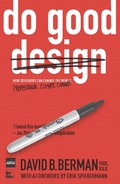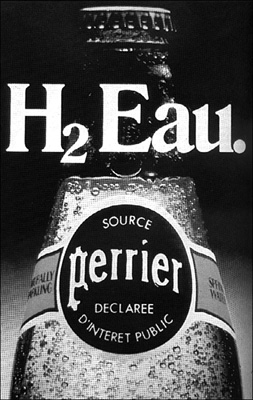
Global fantasy meets local reality on Hong Kong’s Nathan Street, 2006
THE MOST FAMILIAR APPROACH taken by designers who want to help sell more stuff is the misleading and manipulative coupling of sexy bodies with products.
Consider the ad below that ran full page in Life magazine more than 50 years ago.
This “playful” design shows what was considered acceptable in 1952 in the United States. Today, it seems unbelievable that one of the largest American coffee brands would run this ad, and that America’s highest-circulating magazine of the day would print it. Some may be surprised at what the ad reveals about society’s attitude towards women in the 1950s.
It is tempting to dismiss it as simply a reflection of the attitudes of the day. However, to what degree were such full page ads responsible for encourag-ing American men in 1952 that it was okay, even laudable, to beat their wives?
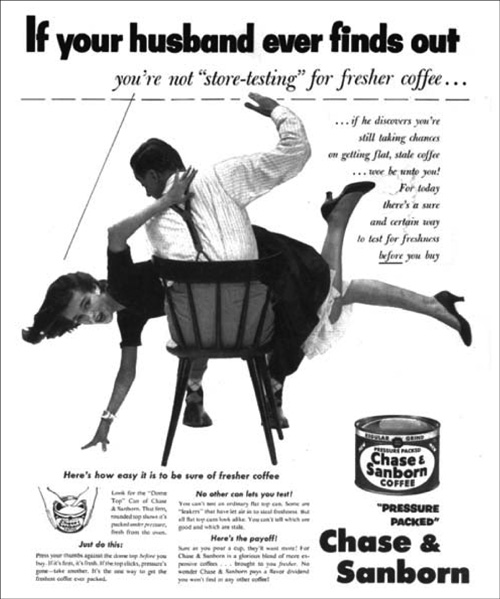
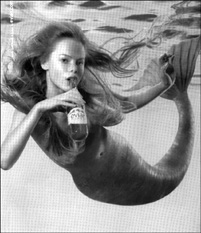
Bottled water, as sold in Men’s Health, 2004
And what currently acceptable advertising running in our magazines today will an increasingly media-literate society look back upon as reprehensible 50 years from now? Ads continue to exploit women, though often with more subtlety.
A teenage mermaid seducing a bottle of water may convince America to burn its oil reserves to ship French water across the sea (to the continent with the world’s largest fresh water supply). But does the means justify the end?
At the same time, what unreasonable expectations are we burying in the messages that we give our daughters today regarding the composition and use of their bodies?
Today’s advertisers are clearly no longer as concerned with anti-sexist backlash as they were in the 1990s, a time when it seemed that such imagery was fading from use in the West in keeping with the march of women’s liberation. I am amongst those who thought this battle would soon be won, just as I thought we had successfully shifted away from subtly undermining the authority of women by referring to them as “girls.”
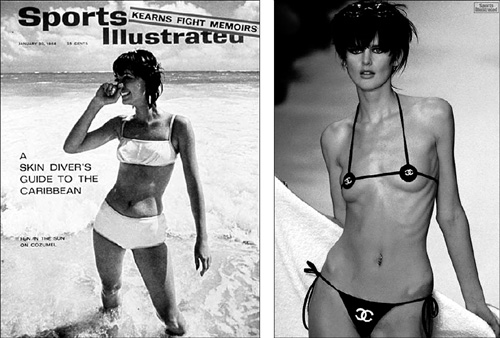
The first Sports Illustrated swimwear issue was published in 1964, legitimized the bikini, and changed the nature of modeling. Today, extreme women serve as billboards for fashion brands.
As a genre of visual cliché becomes accepted in our society, the layering becomes increasingly subtle and derivative. It can be an enlightening exercise to systematically review the use of a particular device, through the spectrum of overt to subtle, delving into the layers.
Because using women’s bodies is such a familiar technique, the next few pages use it to demonstrate an abbreviated version of such an exploration.
From the least subtle, where women’s bodies are actually branded...

This bizarre combination of power imbalance, implied violence, and rede. nition of “true love” results in the female model having her butt branded with the company logo
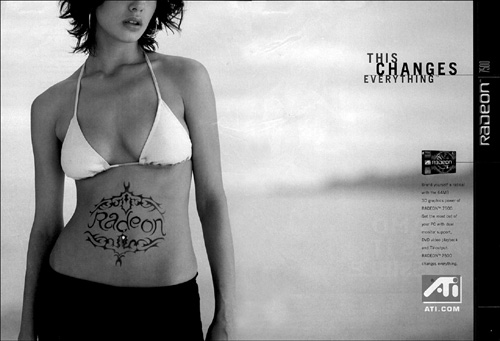
I can’t see how Radeon would begin to defend that branding a woman’s midriff has anything to do with video cards, however they could have at least reproduced their own logo correctly
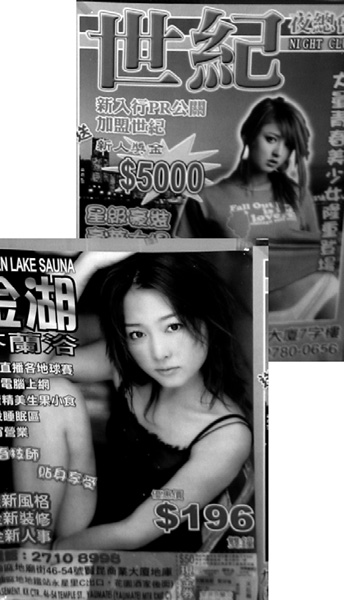
These posters on the streets of Hong Kong are brand advertising for the women themselves
...to the commonplace lazy marketing of using women’s bodies to brazenly promote just about anything.
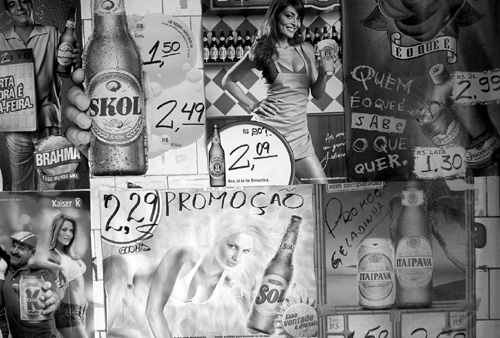
Brazil banned cartoon characters from selling drinks (hurrah!), but selling beer in grocery stores is still considered women’s work

Guess: where are the jeans?
Adding a warm, more human appeal to cold technology is tempting.
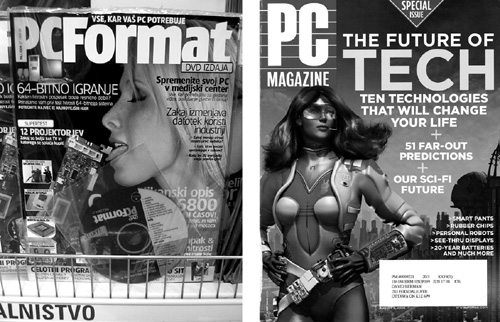
Sex sells computer magazines in Slovenia, as well as the United States
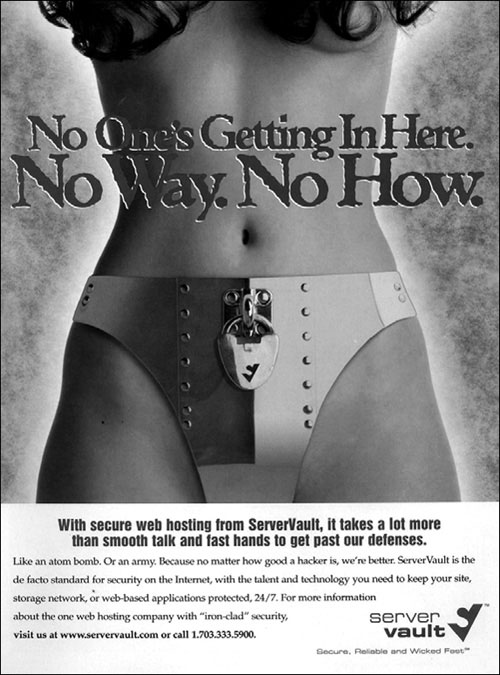
Ads like this sometimes make me truly embarrassed to be a designer
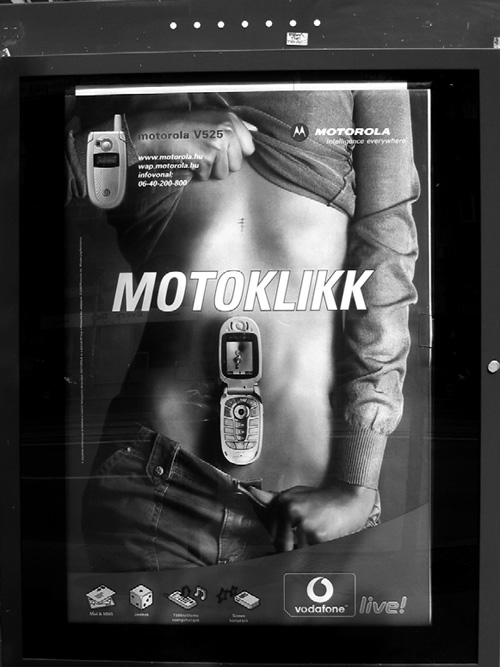
Bus shelter, Budapest: So many phone features, so why focus on human features?

Is it okay to use women to sell good ideas?

Sex helps sell a politician in the Czech Republic. Is this the best way to globalize democracy?
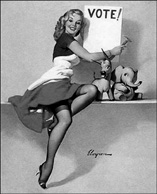
Or is this? On a related matter, is it okay to choose a candidate for her youth or sex appeal?
Is it okay to distort bodies in order to distort opinions?

From out-of-control Photoshopping selling stereo radio in Prague...

...to subtly, impossibly lengthened legs selling toys in Tokyo
Often the context of who is speaking or where they are speaking is what makes the advertising inappropriate.

Of course it makes sense to show a woman in a bikini if bikinis are what you sell. But this ad appeared in Men’s Health magazine. Men don’t buy bikinis; it’s a clever excuse to use women to sell the Nautica brand to men. (And what is going on in that shadow? Art directors don’t let that stuff happen by accident.)
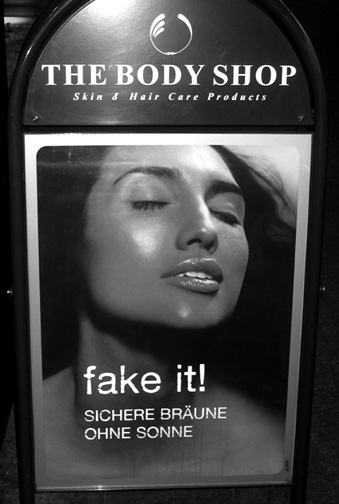
Body Shop ad, Vienna: the world’s second-largest cosmetics company claims amongst its core values to “activate self-esteem”
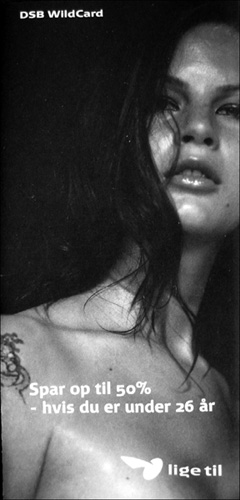
This backlit advertisement, targeting youth, seems tame until you realize that the advertiser is Denmark’s state-owned rail transportation system
As society becomes more media-literate, a common ploy is to mock the styles of earlier decades. Now-forbidden stereotypes re-appear, as we are taken back to a time when they were status quo.
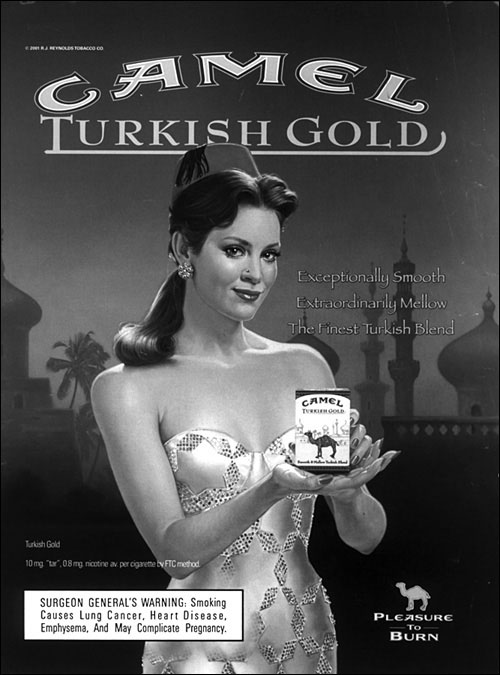
Do women really dress like this in Turkey? (And what do camels have to do with tobacco, anyhow?)
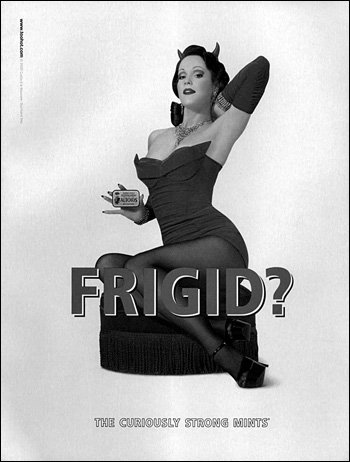
Mints by a tobacco company, curiously pitched with regressive charm by usually progressive Utne Reader
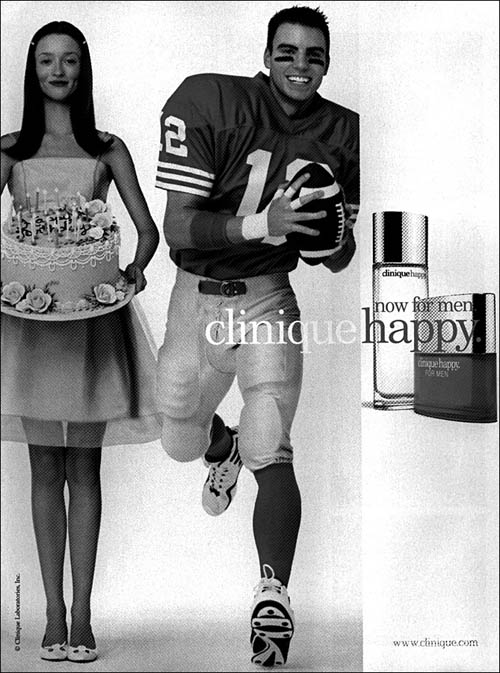
Not quite barefoot, silent, in the kitchen. The throwback theme doesn’t justify the throwback humiliation.
Nor is it okay to recycle retired, deceptive branding for new markets, using questionably empowering slogans...
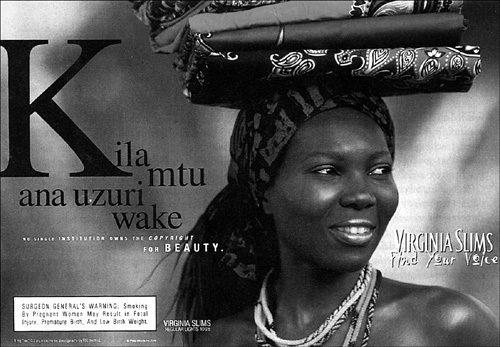
The Virginia Slims brand was famous in the 70s (“You’ve come a long way baby”) for appropriating women’s liberation to addict women to tobacco with a subtle promise of weight loss. Here the brand is resurrected to send an equally twisted “Find Your Voice” message to African women.
The solution is not to introduce false balance by exploiting men to an equal degree.
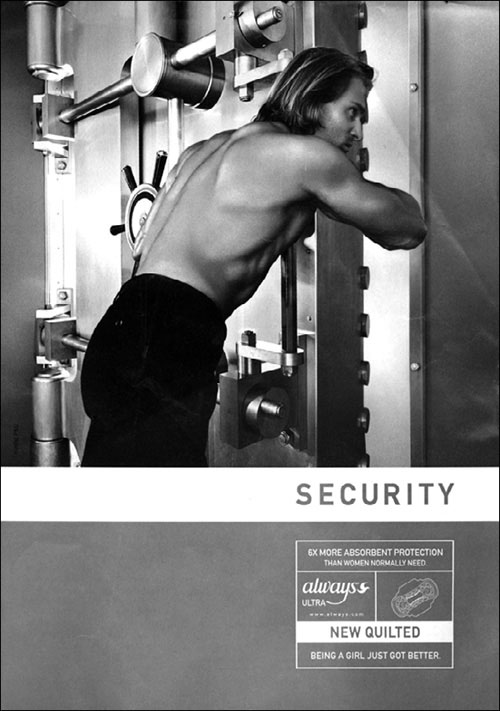
Is security really what is being sold here?
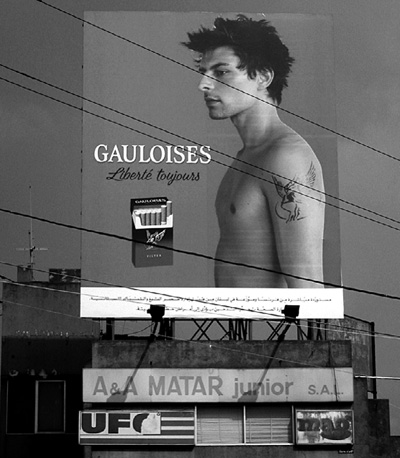
This Beirut billboard brands a man instead of a woman. The slogan translates to “freedom always,” which couldn’t be less true for a young nicotine addict.
The solution is to think, to be aware, to debate.
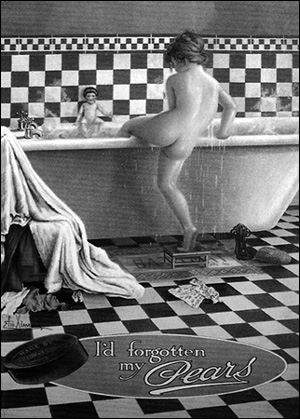
Then.
Pears’ Soap ad from 1920s UK: a delightful parable of how Pears’ soap is worth a chilly and precipitous climb from the tub, or simply the softest of kiddie porn?
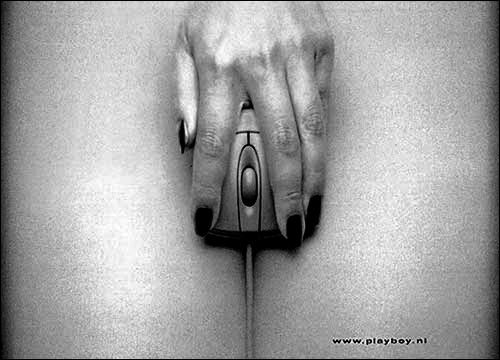
Now.
Is this the most explicit image in this chapter? If you’re willing to set aside the ethics of designer as pornography peddler, this promotion for Playboy’s Dutch site launch is refreshingly creative. But then, perhaps lending sophistication to this industry is neither what men nor women need.
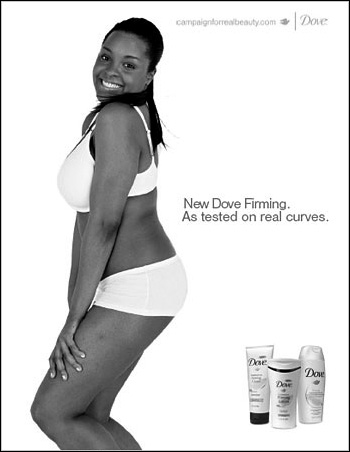
Dove’s Campaign For Real Beauty certainly feels part of the solution. It sells soap more truthfully, and yet goes beyond: positioning the brand as an overt agent of change. But these “real curves” ads were retouched as well. Is advertising masquerading as activism a deception of its own? Perhaps all activism is simply a form of advertising?
The solution is to respect everyone. The solution is to use the power we have responsibly and sensitively. The solution is to imagine a society where the loudest, largest messages are those that not only promote healthy behaviors but also embrace metaphors that reinforce them as well.
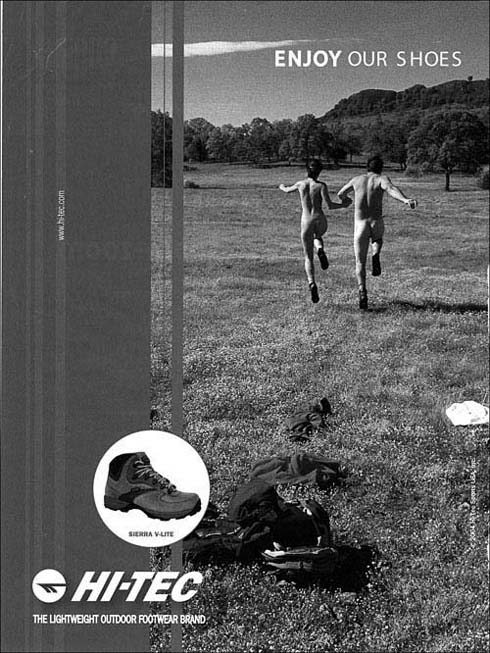
Here’s a delightful, on-message, respectful ad where people are nude yet not naked
